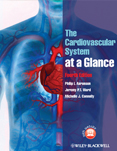- Home
- Cases
- Revision notes
- Your feedback
- Become a reviewer
- 'At a Glance' series
- More student books
- Student Apps
- Join an e-mail list


You are the house officer on a diabetes and endocrine firm. One of your patients is a 34-year-old man, Mr RJ, who was admitted with fever and a rash. On examination, he had a blanching maculopapular rash on the arms, buttocks and lower abdomen, which was itchy. His chest was clear. In view of his fever, you take blood cultures. Four days later the microbiology registrar bleeps you to inform you that the blood cultures have grown Gram-positive cocci. She advises you to start the patient on high dose intravenous flucloxacillin. Each day on the ward round, your SHO examines the patient’s chest and notes that it is clear, his heart sounds are normal and that there are no added sounds. The next morning your team agrees to split the ward round and you ex-amine Mr RJ. You note a new early diastolic murmur that is high in pitch. Your own registrar is concerned at this development and requests that you arrange a transthoracic echocardiogram (TEE). The echo reports thickening of the aortic valve and the presence of a moderate to severe jet of aortic regurgitation. Additionally, a small ventricular septal defect was noted. Your registrar then requests that you arrange an urgent transoesophageal echocardiogram (TOE). The TOE revealed that the patient had an aortic root abscess.
1.What does ‘Gram-positive’ mean?
2.Which organism has most likely been isolated on blood cultures?
3.What is your diagnosis?
4.How do you further manage Mr RJ?
5.What is a ventricular septal defect?
See Chapters 32 and 55.